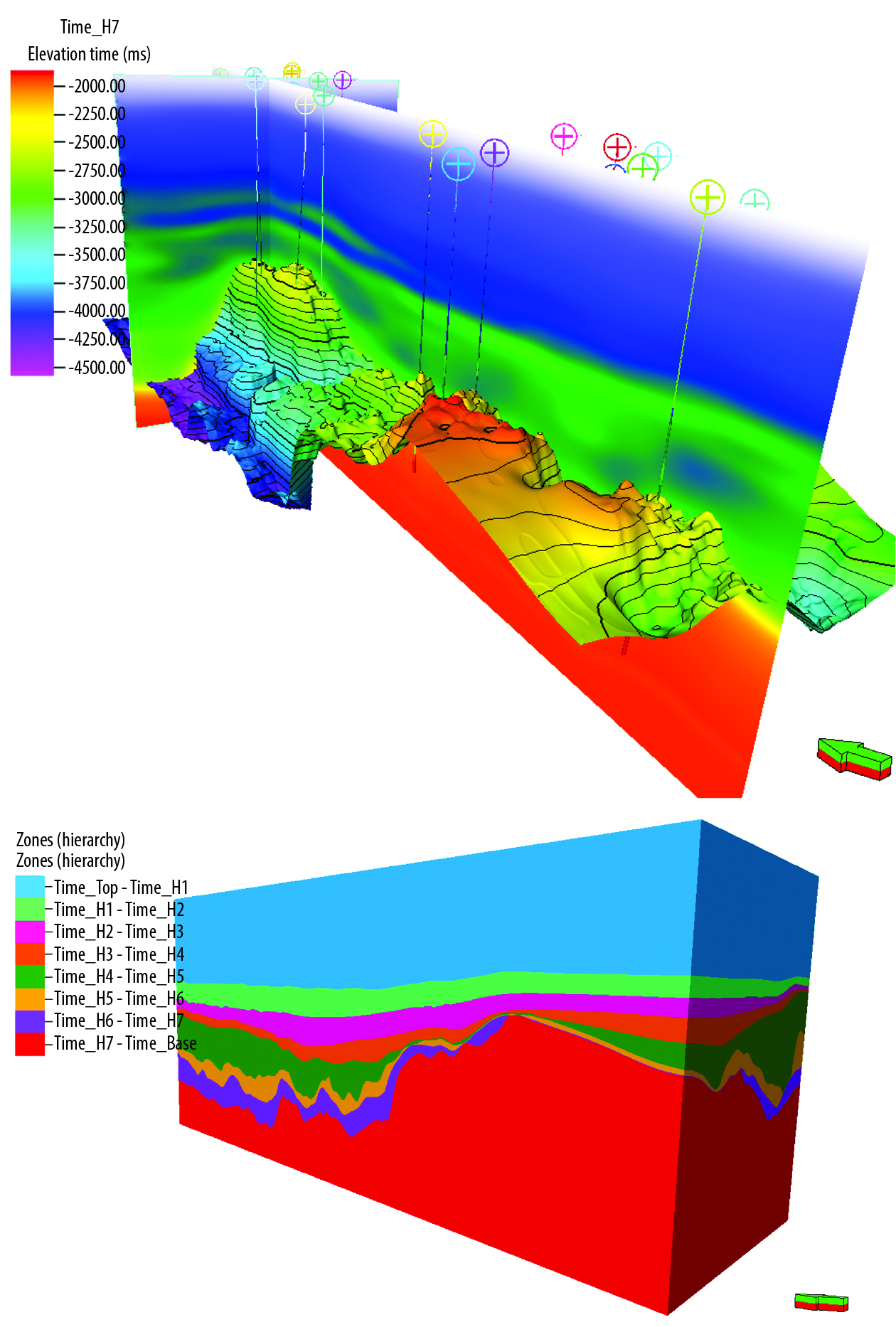A machine learning approach for calibrating seismic interval velocity in 3D velocity model
Abstract
Velocity model technique is routinely used to convert data from the time-to-depth domain to support prospect evaluation, reservoir modelling, well engineering, and further drilling operation. In Vietnam, the conventional velocity model building workflow oversimplifies the interval velocities as only well interval velocities are populated into 2D grids for depth conversion or oversimplified calibration interval velocities by applying a single scaling factor function. This study explores the 3D velocity model workflow to obtain accurate and high-resolution interval velocities using a machine learning approach for both fields A and B in Cuu Long basin, offshore Vietnam.
To design an effective approach to depth conversion, the anisotropy factor analysis was performed to understand the differences between the seismic and well interval velocities in geological layer in the 3D structural model. The seismic interval velocity was multiplied by the anisotropy factor to achieve the scaling seismic interval velocity. The scaling seismic interval velocity, elastic attributes, geometric attributes, structural and stratigraphic attributes were used as training features (variables) for predicting interval velocity using the supervised learning algorithm in the machine learning model. Supervised learning offers an opportunity to develop an expert-knowledge-based automated system, which incorporates both domain knowledge and quantitative data mining [1]. The random forest regression algorithms were selected for predicting interval velocity after evaluating several machine learning algorithms. To provide insight into the uncertainty of final interval velocity, a depth uncertainty analysis was conducted using a blind well test for 24 wells and 7 horizons.
The comprehensive 3D velocity model using machine learning approach was built for the first time in Cuu Long basin, offshore Vietnam. The result showed the machine learning algorithm can address the disadvantages of conventional velocity calibration to create highly accurate depth representations of the subsurface including a measure of the uncertainty.
References
Laura Bandura, Adam D. Halpert, and Zhao Zhang, “Machine learning in the interpreter’s toolbox: Unsupervised, supervised, and deep-learning applications”, SEG International Exposition and Annual Meeting, USA, 14 - 19 October 2018. DOI: 10.1190/segam2018-2997015.1.
Zhao Zhang, Adam D. Halpert, Laura Bandura, and Anne Dutranois Coumont, “Machine learning based technique for lithology and fluid content prediction – Case study from offshore West Africa”, SEG International Exposition and Annual Meeting, USA, 14 - 19 October 2018. DOI: 10.1190/segam2018-2996428.1.
Eduardo Lugo Flores, Marcos Victoria, and Guillermo Sanchez Roa, “Depth conversion: Application of an innovative methodology: Added value to a fractured carbonate reservoir interspersed with tertiary and Mesozoic salt bodies within a very complex structural setting”, EUROPEC/EAGE Conference and Exhibition, UK, 11 - 14 June 2007. DOI: 10.2118/106650-MS.
Leo Breiman, “Random forests”, Machine Learning, Vol. 45, pp. 5 - 32, 2001. DOI: 10.1023/A:1010933404324.
Colin Daly, “An application of an embedded model estimator to a synthetic nonstationary reservoir model with multiple secondary variables”, Frontiers in Artificial Intelligence, Vol. 4, 2021. DOI: 10.3389/frai.2021.624697.

1. The Author assigns all copyright in and to the article (the Work) to the Petrovietnam Journal, including the right to publish, republish, transmit, sell and distribute the Work in whole or in part in electronic and print editions of the Journal, in all media of expression now known or later developed.
2. By this assignment of copyright to the Petrovietnam Journal, reproduction, posting, transmission, distribution or other use of the Work in whole or in part in any medium by the Author requires a full citation to the Journal, suitable in form and content as follows: title of article, authors’ names, journal title, volume, issue, year, copyright owner as specified in the Journal, DOI number. Links to the final article published on the website of the Journal are encouraged.




